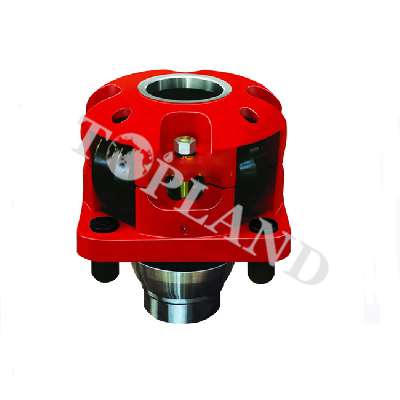ADVANCES OF AN INDUSTRY: A CASE FOR HYBRID DRILLING
Integrating diesel power generation with a battery energy storage system optimizes load profiles, lowering fuel consumption, carbon emissions and operating expenses while stabilizing power supply to improve ROI for onshore drilling contractors.
The oil and gas industry is going through several changes simultaneously: high operating costs and growing expectations regarding environmental, social and governance (ESG) responsibilities—all of which are impacting the revenue outlook of land contract drilling companies and driving the adoption of new technologies.

With these changes in motion, today’s electric drilling rig operators are rising to the challenge to drill harder, faster and more efficiently than ever before. New designs require higher-horsepower mud pumps, top drives and draw works to drill deeper into hard shale rock and unlock oil and gas minerals. There is increased governmental oversight and greater industry efforts focused on production that uses less resources, with fewer equipment operators, enhanced safety measures and emissions reduction targets, which drillers and producers are adopting quickly.
Understanding these expectations and the resulting challenges that drillers face is vital for those supplying equipment and technology to the industry. Rolls-Royce Power Systems, which supplies its mtu brand of engines, drilling packages, power systems and service support technologies to oil and gas customers, is constantly working to study, test and develop customizable solutions to meet these modern-day challenges.
"The landscape in our industry has undergone some substantial changes in the past few years," said Scott Woodruff, director of Oil & Gas for Rolls-Royce Power Systems. "By closely collaborating with our customers, we've been able to anticipate these changes. As a result, we're prepared for the new reality in oil and gas, and we can help advise our clients on the solutions that best fit their needs—both today and for the foreseeable future." Recently, the team at Rolls-Royce conducted a hybrid drilling use-case to collect data on test performance results in field applications. The results show that with the right technology and support, meeting tough expectations is not only possible, but it can also be profitable, as well.
Hybrids reducing land drilling rig operating costs up to 26%. With several factors currently impacting their revenue outlook, as they adapt to industry disruption, drilling contractors are focused on saving money for fuel and maintenance-related expenses. Through cost reductions, the service they offer becomes more profitable while also addressing fuel efficiency and emissions reduction targets, set by producers. With respect to load capacity, diesel generators used at drilling sites are generally operated very inefficiently. During pipe tripping and drilling operations, up to three generators run at 35% to 55% load, while a fourth sits idle as a spare. During set-up and testing, well logging and casing/cementing, or during mobilization, load capacity is even lower. The result is poor fuel efficiency and emissions performance, along with high operating and maintenance costs.
Hybrid drilling solutions can provide an effective alternative to traditional equipment set-ups. Integrating diesel power generation with battery energy storage systems (BESS) optimizes load profiles, which significantly lowers fuel consumption, emissions and operating expenses while stabilizing the power supply.
As with a non-hybrid drilling unit, a hybrid rig also uses diesel generator sets as the primary power source. Thanks to the addition of a BESS, however, surplus energy can be recovered and used to optimize load profiles. At the center of such a system is a microgrid controller that intelligently and efficiently balances and manages the power asset utilization by monitoring and controlling generation equipment and consumer meters and/or breakers, maintaining stable power supply, protecting generator sets from overload and maximizing the use of renewables.
Overall, the hybrid system can achieve 55% to 80% load capacity with only one or two generators, and a third as backup. To demonstrate the potential energy cost savings of a hybrid drilling solution, compared with a non-hybrid drilling solution, Rolls-Royce calculated a business case example, using HOMER Pro software and actual drilling rig load data.
In the example, a BESS with 0.69 MWh was integrated into a non-hybrid land drilling rig set-up, with an average baseline load of 1.5 MWe and a peak demand of 2.7 Mwe, powered by three diesel generator sets, with a fourth used as a spare. As expected, the addition of the BESS to the three-diesel genset set-up enabled the gensets to run at peak efficiency, boosting their load capacities to 55% to 80% while eliminating redundancy of additional backup generators.
The analysis concluded that investment in a hybrid drilling solution can be an effective means for achieving profitability in the current market environment. Given the substantial savings in operating expenses, the solution pays for itself in only 1.8 years. Reduced maintenance and parts costs, as well as extended power asset utilization, allow for even greater savings.
Putting solutions to work. In real world applications, drillers looking to put hybrid solutions to the test have options, such as the mtu hybrid drilling package (HDP), which involves replacing one electric drilling package (EDP) with a BESS to improve rig efficiency, performance and grid stability, Fig. 1. The key components of the package include a Tier 2- or Tier 4-certified EDP, combined with an EnergyPack System, which stores electricity from any distributed power source and delivers it, when needed, to produce the lowest cost of generating electricity. Together, the new system delivers:
● Up to 15% reduced fuel consumption
● Reduced emissions, via fuel savings and efficiency improvements
● Reduced OPEX through genset operating hours, >40% reduction yearly
● Reduced number of gensets required onsite
● Recaptured energy and the ability to operate gensets at peak efficiency
● Immediate power for transient responses for peak shaving and spinning power reserves
● Extension of time between overhaul of gensets by double (15 years vs 7.5 years).
The introduction of hybrid drilling technology comes just in time, as the industry looks for new ways to find competitive advantages. You can tell that Woodruff has a passion for the systems, as he talks about them. “We have decades of experience in the oil and gas industry and more than 70 BESS installations worldwide—and counting,” he says. “These innovative hybrid solutions offer concrete benefits for our customers, backed by the in-depth knowledge and expertise of Rolls-Royce Power Systems.” Hybrid isn’t just the wave of the future; that future is helping today’s forward-looking drilling companies make an impact now.




 Upload RFQ
Upload RFQ






 Twitter
Twitter Linkedin
Linkedin Facebook
Facebook YouTube
YouTube Sales@toplandoil.com
Sales@toplandoil.com +86 21-50890868
+86 21-50890868 Head Office: 8-1011,Lane 5600, Chuansha Road, Pudong, Shanghai, China
Head Office: 8-1011,Lane 5600, Chuansha Road, Pudong, Shanghai, China 